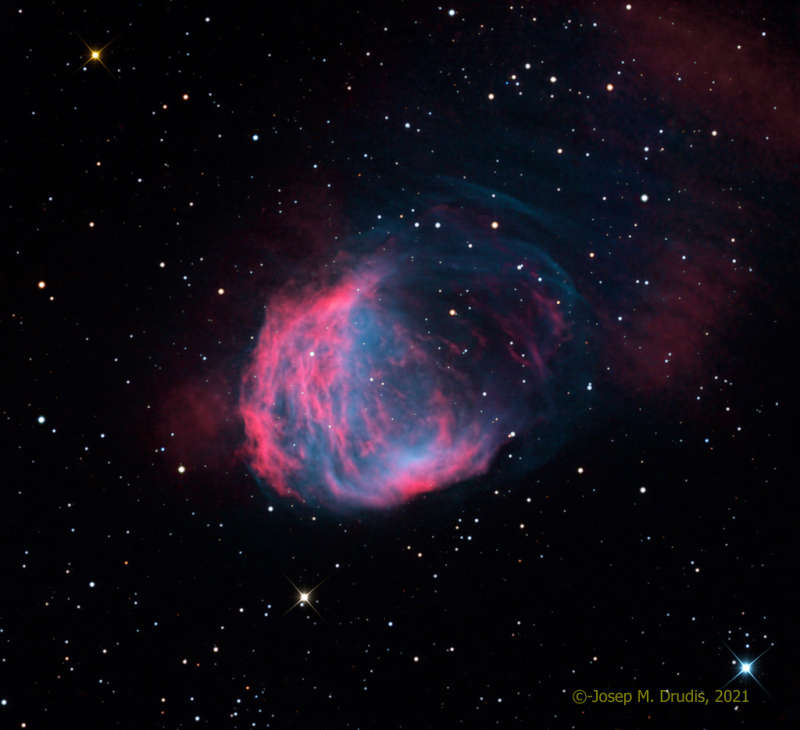
|
Credit & Copyright: Josep Drudis
Explanation:
Braided and serpentine filaments of glowing gas
suggest this nebula's popular name, The Medusa Nebula.
Also known as Abell 21, this Medusa is an old
planetary nebula
some 1,500 light-years away in the constellation Gemini.
Like its mythological
namesake, the nebula is associated with a dramatic transformation.
The planetary
nebula phase represents a final stage in
the
evolution of low mass stars like the sun
as they transform themselves from
red giants
to hot white dwarf
stars and in the process shrug off their outer layers.
Ultraviolet
radiation
from the hot star powers the nebular glow.
The Medusa's transforming star is the faint one near the center
of the overall bright crescent shape.
In
this deep telescopic view,
fainter filaments clearly extend
above and right of the bright crescent region.
The Medusa Nebula is estimated to be over 4 light-years across.
|
January February March April May June July August September October November December |
| ||||||||||||||||||||||||||||||||||||||||||||||||
NASA Web Site Statements, Warnings, and Disclaimers
NASA Official: Jay Norris. Specific rights apply.
A service of: LHEA at NASA / GSFC
& Michigan Tech. U.
Based on Astronomy Picture
Of the Day
Publications with keywords: planetary nebula
Publications with words: planetary nebula
See also:
- APOD: 2025 August 31 Á NGC 7027: The Pillow Planetary Nebula
- APOD: 2025 August 22 Á A Tale of Two Nebulae
- APOD: 2025 August 5 Á NGC 6072: A Complex Planetary Nebula from Webb
- APOD: 2025 July 29 Á A Helix Nebula Deep Field
- APOD: 2025 July 13 Á Planetary Nebula Mz3: The Ant Nebula
- APOD: 2025 June 9 Á Between Scylla and Charybdis: A Double Cosmic Discovery
- APOD: 2025 May 14 Á NGC 1360: The Robins Egg Nebula
